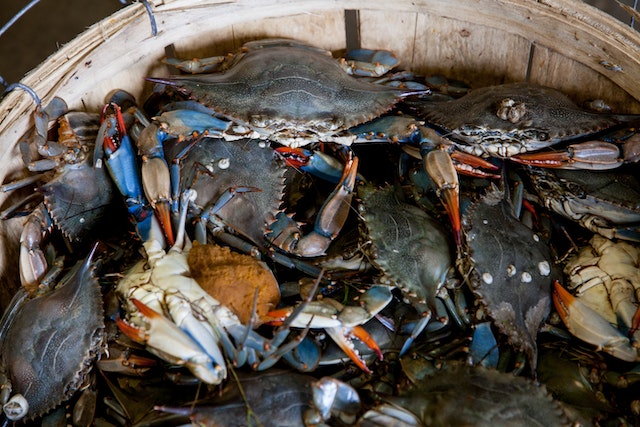
The Government and Environmental Associations Collaborate to Safeguard the Ecosystem Balance, Severely Tested by this Crustacean
The blue crab, native to the western Atlantic, was accidentally introduced into Italian waters through maritime traffic and the aquaculture trade. These crabs, known for their voracity and adaptability, have spread rapidly along the Italian coasts, representing a threat to biodiversity and the balance of local marine ecosystems. Biological invasions are increasingly common phenomena around the world, caused by the introduction of non-native species into new habitats. In the case of the blue crab, its presence has become a threat for several reasons. The blue crab feeds on a wide range of marine organisms, including molluscs, crustaceans and small fish. Its voracity has a direct impact on the availability of food for other native species.
The blue crab is also an efficient predator, hunting small marine organisms, and such predatory activity can negatively affect local species populations, putting the marine food chain at risk. Burrowers like the blue crab can modify marine habitat, creating burrows that can affect the structure of the seafloor and the surrounding ecosystem. The expansion of blue crab populations may lead to competition for space with other native species, endangering the balance of marine habitats and highlighting the need to take urgent measures to manage the invasion of blue crabs in Italian waters.
To effectively address the blue crab invasion, it is critical to conduct detailed research to better understand the dynamics of crab populations and their impact on local ecosystems. Regular monitoring of affected areas should be a priority, allowing data to be collected on the crab’s distribution and abundance. Involving the local community and fishermen in managing the invasion is essential. Raising awareness of the risks of introducing invasive species and sustainable fishing practices can help reduce the spread of the blue crab and preserve marine resources.
Direct measures are needed to limit blue crab populations and may include targeted fishing of the crustacean in question, capture of adult specimens and the implementation of anti-crab nets in the most affected areas. Promoting the consumption of blue crab can help reduce their populations and, in many places, blue crab is already considered a delicacy. Developing local markets for blue crab could boost fishing and reduce pressure on native species. Since the introduction of the blue crab is often due to maritime traffic, it is essential to implement stricter regulations on ballast water discharge and the accidental release of non-native species into Italian coastal waters.
Investigating the use of natural predators or antagonistic organisms that can control blue crab populations without harming native species could be a promising strategy. The blue crab invasion is a global problem therefore, collaborating with other countries facing the same problem can lead to more effective and shared solutions. Promoting environmental awareness and education in schools and local communities is crucial to supporting invasion management measures. Informed individuals are more likely to support and comply with conservation regulations.
The invasion of the blue crab in Italian waters is a real threat to the marine ecosystem and requires immediate management action. Monitoring, awareness-raising, population control and other countermeasures are key to mitigating the negative impact of this invasive species. Furthermore, it is important to remember that the invasion of the blue crab is just one example of the many problems associated with biological invasion in marine waters. The protection of marine ecosystems requires ongoing commitment from governments, local communities and environmental organizations to preserve the beauty and diversity of our coasts and seas.
Alessandro Fiorentino



 Subscribe
Subscribe